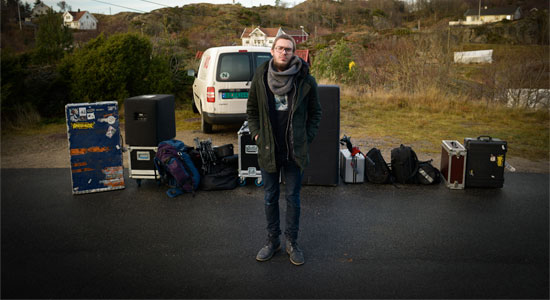
Kristoffer Lo proves recording the tuba in a lighthouse makes for a great record
Kristoffer Lo’s name may not ring many non-Norwegian bells, but at home he’s recognized as a genre-defying multi-instrumentalist who blurs musical disciplines via nontraditional instrumentation. Since his teens, Lo has been extracting the sonorous honk of his primary instrument, the tuba, from marching bands and classical ensembles, finding a home for the big horn in indie pop (Highasakite), drone jazz (YODOK) and doom/sludge metal (Sunswitch). He was also recently nominated for a Norwegian Grammy for Savages, a piece originally commissioned for 2014’s Moldejazz Festival.
“Tuba was my main instrument when I studied jazz at the University of Trondheim,” he says. “I started adding effects and altering stuff when I was 17 years old. I had a bunch of guitar pedals that I used with my Marilyn Manson-ish band, so I just tried using them on my tuba, and it worked.”
In keeping with his persistent thinking outside an already fluctuating box, Lo is set to deliver his second solo full-length, The Black Meat. Consisting of three lengthy improvised sibilating soundscapes, The Black Meat is as notable for ethereal haunting as it is for the story surrounding its creation during a weekend at Ryvingen, Norway’s southernmost lighthouse.
“The decision to go to Ryvingen was actually made by a journalist called Andre Løyning,” says Lo. “He wanted to make a documentary about me and film it at the lighthouse. When he showed me pictures, I got the idea to record there. The lighthouse is on an island off the coast. So we loaded a small fishing boat full of amplifiers and recording equipment and carried it in wheelbarrows up 600 meters of steep hill and the staircases inside the lighthouse.
“We did encounter some minor power outlet issues. We had to get power from a shed across the lawn and keep two doors ajar so the cables could sneak in. That became an issue when the storms were hitting hard outside. You can hear the winds hitting the walls of the lighthouse and slamming the door on the recording. But, it was fun, in a strange way, and how often do you get the chance to record at a lighthouse in the middle of the night?”
—Kevin Stewart-Panko






